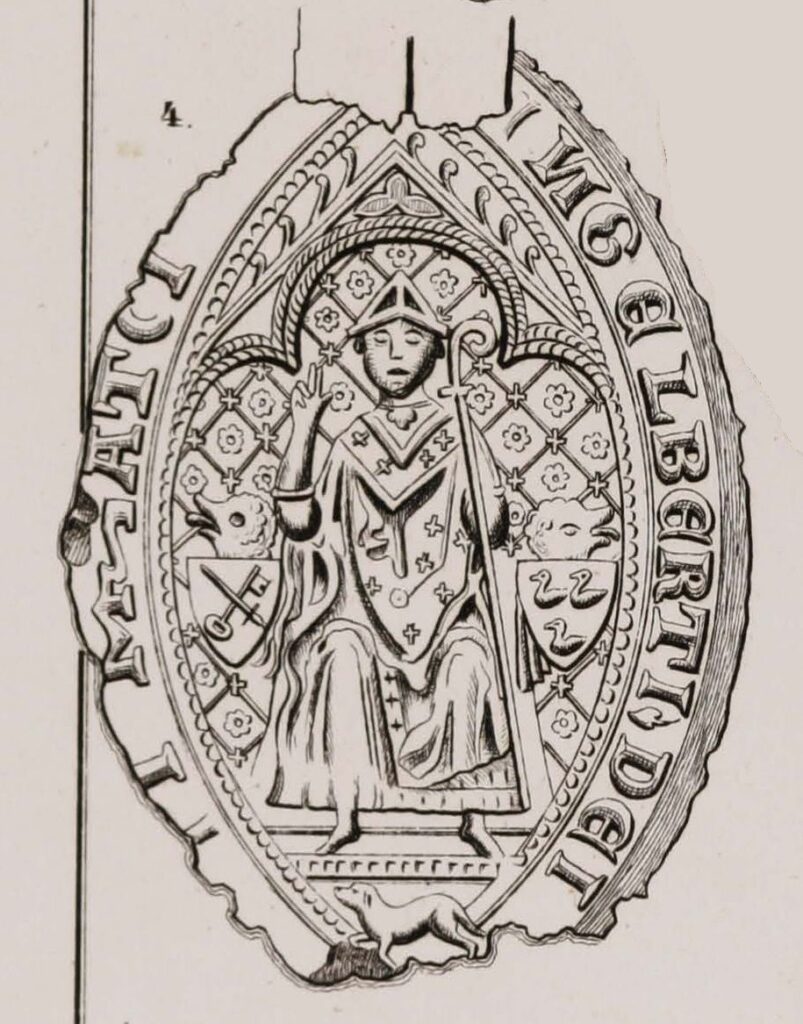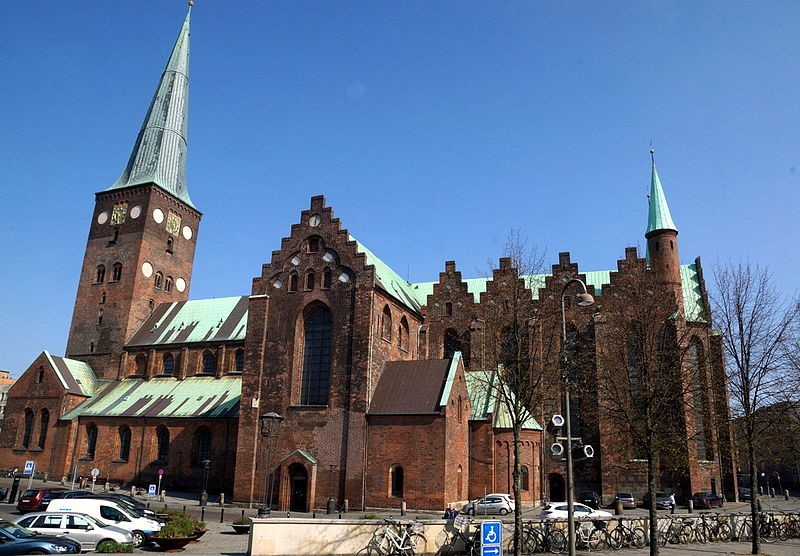By Stefan Pajung and Mihkel Mäesalu
While the activities of Danish clergymen in Estonia have attracted some attention from historians, theologians, and other scholars, far less is known about Estonian clerics who went the other direction and came to Denmark during the Middle Ages. Accordingly, we set out to establish the extent to which this occurred and dove into the Danish sources on this subject. As always, when you are dealing with the medieval period, you cannot be sure about the origin of most people as soon as they take common Christian first names unless the source also states their place of origin. So, for a long time we drew up blanks. It seemed that we could not find any hard evidence of an Estonian clerical presence in Denmark.
Until we found a source mentioning a John of Wesenberg (today: Rakvere) who was a canon in Århus. Surely, he must have been from Estonia. And so, he was – he was mentioned for the first time as early as 1313 in connection with the Danish vassals in Estonia and by 1321 he had become a canon in Reval (Tallinn). But then the next question imposed itself. How did he end up in Denmark in the first place? And why was he among prince Valdemar’s companions during a political meeting in Greifswald in May 1338?

Bitten by the curiosity bug, we set out to find out more. It turned out that John of Wesenberg was not a popular character everywhere in Livonia. Especially not in Dorpat (in Estonian: Tartu). To understand why, we must go back to 1323, when bishop Nicolaus of Dorpat died. During his reign, John of Wesenberg had obtained a papal provision to the office of provost at the chapter of Dorpat, but the bishop and the chapter were uneasy about this. In 1324, the provost of Dorpat, Engelbert von Dolen, was elected as the new bishop.

John stood ready to take the place promised to him earlier now that the position of provost was vacant and obtained a papal confirmation for his new position. But bishop Engelbert stated, in compliance with the chapter, that John was not welcome, as his appointment would be deeply resented by the canons in Dorpat and would cause all kinds of trouble. Engelbert therefor asked the pope for permission to ask the archbishop of Riga, the bishop of Ösel (Osilia/Saaremaa) and the bishop of Roskilde to mediate. This apparently brought no solution, and Engelbert and the Dorpat canons appealed to the pope to dismiss John’s papal nomination. They were indeed successful. In Christmas 1328 pope John XXII agreed to annull John’s nomination in Dorpat and gave Engelbert the authority to appoint a provost of his choosing. Clearly, John of Wesenberg had been put on ice by the local opposition and lost out on achieving his promised position.
We don’t know exactly what happened immediately after John of Wesenberg had been denied a position at the chapter of Dorpat, but in 1338, when we meet John of Wesenberg again, he was in from the cold, as he had achieved to become both the schoolmaster at the cathedral school of the bishopric of Ösel and a canon in Århus.

He had already been given a provision for a canonry in Århus in 1321, and unlike what had happened in Dorpat, he was actually allowed to take this position at some point before 1338. By then John’s knowledge of Estonian conditions must have been a valuable asset to the bishop of Aarhus, Svend. Svend was during the 1330’s one of the chief advisors and staunchest supporters of the young prince Valdemar, who tried to find as much support as possible in his struggle to become king of Denmark. Valdemar’s position as duke of Estonia was one of the strongest assets he still had. It seems that bishop Svend brought John of Wesenberg along for the meeting in Greifswald so that he could provide the young prince with much needed knowledge of conditions in the duchy. However, we do not hear of John after he accompanied Valdemar to Greifswald.
There is the possibility that he had died by 1344, as he is not mentioned among the canons of Reval (which he also was since the 1320’s), when they all signed a charter in August of that year. We do not know for certain – he might also just have resigned his position in Reval and lived out his life in Denmark. But as it turns out, he was not the only Estonian cleric in Denmark during the Middle Ages. But more on them later!


